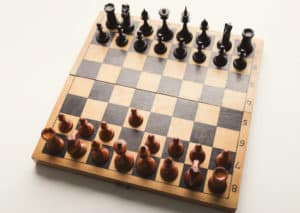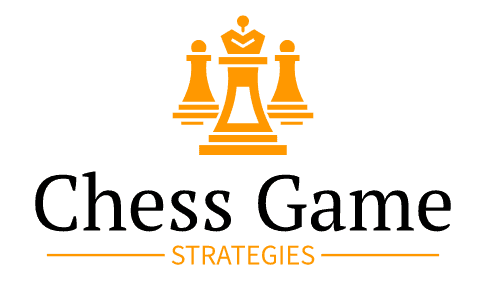
If you hear reference to Annotated Chess, Chess Annotation, or its other moniker, Chess Notation … they all refer to the same thing. That is:
“A system for recording moves on a board
during a game of Chess.”
To be honest, if you’re just going to play for fun, now and again, you can save yourself a few brain cells and skip this page …
However, if you plan on following tournament games; want to really study the finer points of this brilliantly strategic game; or want to tackle Chess Puzzles in your favourite newspaper, then keep reading:
BEGINNERS – READ THIS BEFORE MOVING ON!
You will most likely go clinically insane if you try and learn Chess Notation “off by heart” before ever playing a game.
Instead – get to know the Individual Chess Pieces, Proper Chess Board Setup and the Basic Chess Moves and GET PLAYING (click here, if you don’t have a game on your computer) …
And come back here now and again to “fill in the blanks” with this Annotated Chess malarky.
Annotated Chess Guide Index
This Annotated Chess Guide has been written in a logical order and, if you’re new to chess, it’s recommended you begin with the Three Main Systems and work your way through the guide, as it’s laid out.
If, on the other hand, you’re more experienced and just need a little ‘refresher’ on some of the points, cherry pick the subjects (below) as you see fit.
The three most popular Notation systems are (not in order of popularity!): (1) Descriptive, (2) Forsyth, (3) Algebraic.
This is THE system used at modern Chess Tournaments and, as such, is the one we’re focusing on in this Annotated Chess Guide.
Each of the 64 squares on the Chessboard has a unique reference, made up on numbers (1 to 8) and letters (a to h).
In the Algebraic system, CAPITAL LETTERS are given to represent each of the major pieces on the board – be they Black or White. There isn’t any letter-reference for the Pawns.
With Algebraic notation, the ONLY reference that’s recorded is the square a piece actually finished on, plus the initial of the Piece involved (not including the Pawns). So, d6 would indicated a Pawn has advanced to the d6-square; while, Ra4 would indicate a Rook has moved to the a4-square.
Captures are recorded with a lowercase letter ‘x‘, such as Qxe6, which would state that a Queen captured on the e6-square.
Castling on the Kingside is recorded with two zeros (0-0), or two letter Os (O-O); Castling on the Queenside is recorded with three zeros (0-0-0), or three letter Os (O-O-O).
When a Pawn reaches the enemy’s back row, the notation used depends on which piece the Pawn is exchanged with (N = Knight; B = Bishop; R = Rook; Q = Queen). In addition, before each of those letters, you put the promotion square’s reference. So, e8Q would indicate a White Pawn Promoting on the e8-square, to a Queen.
If White Wins, the notation written is: 1-0; if Black Wins, the notation is: 0-1; if it’s a Draw, the notation is: ½-½.
10. Summary
If you can’t be bothered to trundle through the above (though you should, “coz it’s good”), you might be able to get by with a cheeky peek at this summary of the Algebraic Chess Notation.

